Conversational AI for customer service: Scaling with empathy
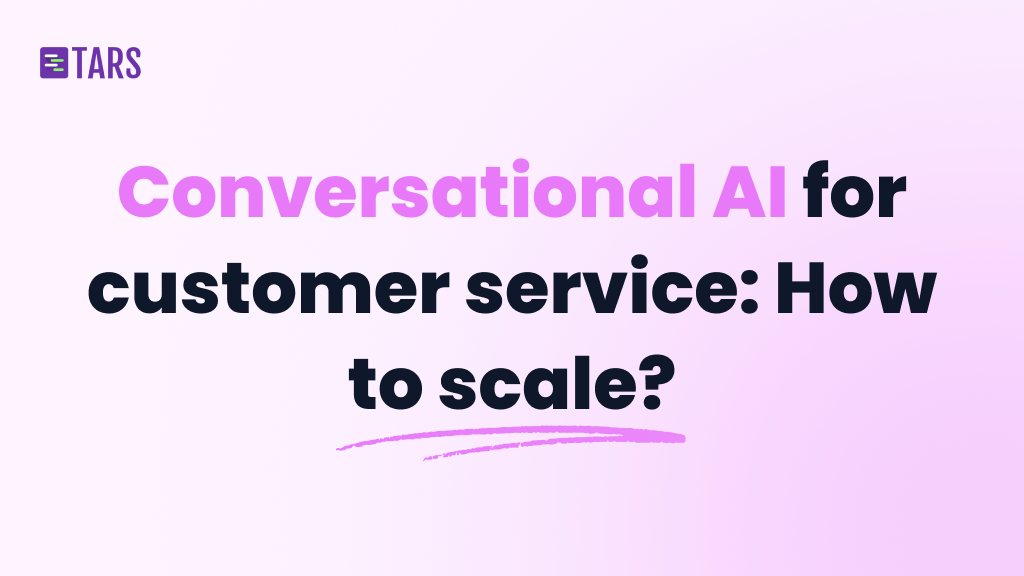
Remember the last time you tried to get help from a chatbot and ended up more frustrated than when you started? Yeah, we’ve all been there. You type your question, the bot gives you three completely unrelated options, and suddenly you’re screaming “TALK TO A HUMAN” at your screen like a lunatic.
But here’s the thing: that’s not what modern Conversational AI for customer service looks like anymore.
Customer service has changed a lot in the past couple of years. And no, we’re not just talking about adding a chat bubble to your website and calling it a day. Real Conversational AI, the kind that actually helps people instead of annoying them, understands what your customers are saying, picks up on context, and responds like an actual human being would.
At Tars, we build AI Agents that help businesses automate customer support and acquisition. The goal? Let you scale your operations without making your customers want to throw their laptops out the window.
What conversational AI actually is (and isn’t)
Let’s clear something up right away. Conversational AI isn’t just a fancy chatbot that follows a decision tree. Those “if customer says X, respond with Y” bots? That’s old news. In fact, by the end of 2025, 95% of customer interactions will involve AI.
Real Conversational AI utilizes natural language processing (NLP), machine learning, and large language models to facilitate genuine conversations. It understands context, remembers what was said earlier, and can handle the kind of messy, real-world questions that people actually ask.
Think of it like this: a traditional chatbot is like talking to someone who can only respond with pre-written index cards. Conversational AI is like talking to someone who actually listens, thinks, and responds based on what you’re saying.
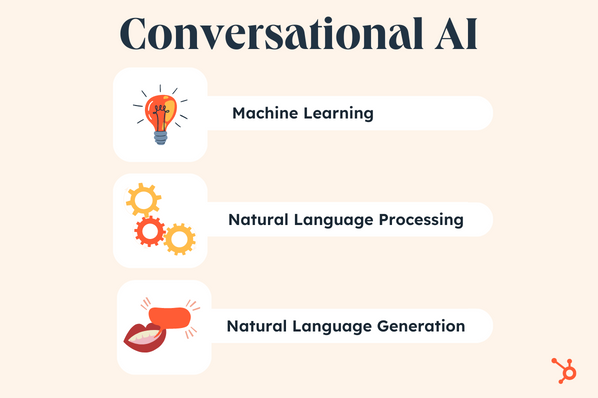
Credit: HubSpot
Conversational AI for customer service: It’s not just keyword matching anymore
Here’s where things get interesting. We’ve moved way past the days when AI just looked for keywords and hoped for the best.
Modern AI Agents for customer service don’t just identify topics—they understand the actual meaning behind what someone is saying. And that makes all the difference.
Reading the room (or, you know, the sentiment)
Your AI Agent can tell when someone’s frustrated versus when they’re just curious. It picks up on emotional cues and adjusts how it responds.
A frustrated customer doesn’t need a cheerful “How can I help you today? 😊” They need someone (or something) to acknowledge the problem and get straight to solving it. An excited customer who just discovered your product? That deserves enthusiasm right back.
Actually remembering stuff
Nothing’s more annoying than having to repeat yourself three times in the same conversation. Good conversational AI doesn’t have that problem—it remembers everything from the current conversation, plus relevant details from past interactions, previous purchases, or support tickets.
So when a customer says, “I’m having the same issue again,” the AI actually knows what “again” refers to. Wild, right?
Understanding what people really mean
This is the big one. When someone says “I’m thinking about upgrading,” they’re not just asking about pricing. They’re exploring options, trying to figure out if it’s worth it, maybe wondering what’s included in the higher tier.
A good AI Agent gets that. It understands the why behind the question and responds appropriately—maybe by asking about their needs, walking through the benefits, or explaining what’s different about each plan.
It’s the difference between answering the question someone asked and helping them solve the problem they actually have.
Why your customer service team probably needs this
Look, we get it. Your support team is doing their best. But here’s what they’re up against:
- Customers expect answers in minutes, not hours
- Someone’s always awake somewhere in the world, and they all want help right now
- Peak periods (product launches, Black Friday, that one time your site went down) can bury your team
- Hiring and training enough people to handle everything is expensive
The stats back this up. Approximately 95% of decision-makers at companies with AI report reduced costs and time savings, while 92% believe that generative AI enhances their customer service. Moreover, 83% plan to increase AI investments next year, with only 6% opting out of AI plans.
That’s not because they’re trying to get rid of their support teams. It’s because they’re trying to give them a fighting chance.
Scaling without making everything worse
Here’s the promise everyone makes with automation: “Do more with less!” Great, except usually that means “do more, worse, with less.”
Traditional automation meant choosing between scale and quality. You could handle more volume, but customers would hate the experience. Or you could maintain quality but never scale past a certain point.
Modern conversational AI breaks that trade-off. You can actually scale without everything falling apart.
Every conversation is consistent
Your AI Agent doesn’t have bad days. It doesn’t get tired after answering the same question for the 50th time. Customer number 1 and customer number 10,000 both get thoughtful, accurate, helpful responses.
This isn’t about replacing personality with robots—it’s about making sure every customer gets the same level of care.
It actually sounds human
Nobody wants to talk to something that sounds like it was programmed in 1995. Good conversational AI talks like a person. It asks follow-up questions when something’s unclear. It explains things in normal language, not corporate-speak.
You don’t need to phrase things perfectly or use magic keywords. You just… talk. And it understands.
Knowing when to tap out
Quality also means knowing your limits. When a conversation needs human judgment, empathy, or creativity, the AI Agent hands it off to your team—along with everything it learned from the conversation so far.
Your agents don’t have to start from scratch asking the same questions all over again. They jump in with full context and can focus on actually solving the problem.
Getting smarter over time
Your AI Agent learns from every conversation. It figures out what works, adapts to new situations, and gets better at helping people. Meanwhile, your quality stays consistent (or improves), even as you handle more volume.
Sounding like you
Every AI Agent through Tars can be customized to match your brand’s voice. Casual and friendly? Professional and polished? Somewhere in between? Your automated conversations should sound like they’re coming from your company, not some generic bot.
What this actually looks like in practice
Handling the obvious stuff instantly
Password resets, order tracking, “where’s my stuff,” basic account questions—your AI Agent can handle all of this immediately. No waiting, no tickets, no back-and-forth.
This isn’t just convenient for customers. It frees up your human team to work on things that actually need human brains. Companies typically see 50-65% of their support volume get resolved by AI, which means agents can focus on the complicated, interesting problems.
Speaking everyone’s language
Your AI Agent can respond in dozens of languages without you hiring translators for each one. Customers get help in their native language, instantly, any time of day.
Smart handoffs to the right person
When the AI does need to bring in a human, it doesn’t just dump the customer on whoever’s available. It figures out who’s best equipped to help based on the conversation, then routes it to them with all the context ready to go.
Catching people before they get stuck
The AI can tell when someone’s struggling on your website and jump in to help before they give up and leave. This is huge for customer acquisition—guiding potential customers through their journey right when they need it most.
Staying in touch after the sale
From shipping updates to recommendations, your AI Agent keeps the conversation going throughout the customer journey. It builds relationships, not just transactions.
Real results from real companies
Here’s what companies are seeing when they implement Conversational AI:
- UCI Paul Merage School of Business automated 66% of customer service conversations.
- American Express automated 49.3% of conversations using Tars AI Agents.
These aren’t just cost savings. They’re proof that you can grow faster, serve customers better, and make your team’s lives easier all at the same time.
AI and humans working together (not against each other)
Let’s address the elephant in the room: no, AI isn’t replacing your support team. That’s not how this works.
The best customer service combines AI handling routine stuff with humans tackling everything that needs creativity, empathy, or judgment.
Support leaders are already seeing this shift. Instead of eliminating jobs, AI is creating new roles—chatbot developers, conversation designers, AI strategists. The work is evolving, not disappearing.
Here’s what the partnership looks like:
- Customers get instant help 24/7, plus human expertise when they need it
- Support agents spend their time on interesting problems instead of answering “where’s my order” for the 500th time
- Your business runs more efficiently while keeping customers happy
What you’re actually getting by merging conversational AI with customer service
Operational efficiency: Cut your support volume by up to 50% while answering people faster. About 67% of North American support leaders are investing more in AI this year to handle more with smaller teams.
Lower costs: Automated responses cost a fraction of what human agents do, and you can often reduce operational costs without sacrificing quality.
Infinite scale: Ten customers? Ten thousand? Doesn’t matter. Your AI Agent handles them all without breaking a sweat. It works across your website, Facebook Messenger, Instagram, WhatsApp—wherever your customers want to talk.
Better insights: Every conversation teaches you something. Your AI spots patterns, identifies common problems, and surfaces opportunities you might have missed.
Happier customers: When you combine speed, accuracy, and low effort, satisfaction scores go up.
Always available: Early morning, middle of the night, different time zones—your AI Agent is always there, speaking whatever language your customer prefers.
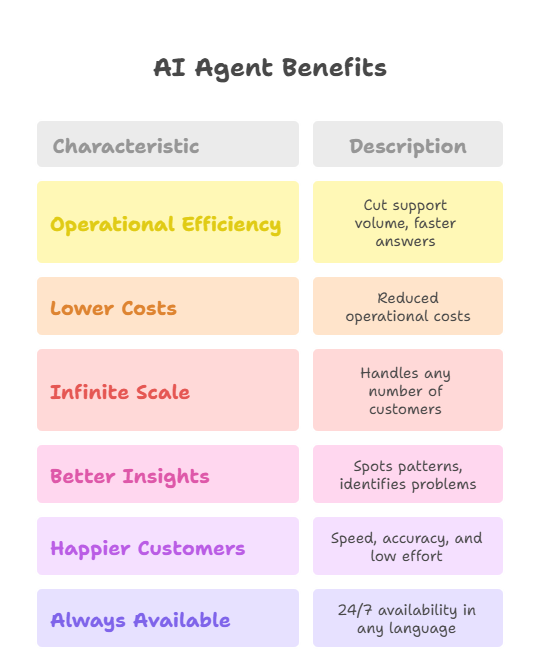
Getting started with Tars
Ready to try this? Here’s how it works with Tars:
- Figure out your use cases: What questions do you answer constantly? Where are your biggest bottlenecks?
- Connect your content: Link your knowledge base, upload documents, or share relevant URLs. Tars learns from your content to give accurate, on-brand responses.
- Make it yours: Customize how your Agent looks and sounds to match your brand.
- Launch everywhere: Deploy across multiple platforms to reach customers wherever they are.
- Watch and improve: Use analytics to see what’s working, find opportunities, and make things better over time.
- Scale confidently: As your business grows, your AI Agents grow with you – no quality loss, no compromises.
The bottom line: Conversational AI for customer service
Customer service is changing from reactive “help me fix this” to proactive “let me help you before you even ask.” And it’s happening at scale, across channels, in every language, 24/7.
Platforms like Tars make this possible. You can automate support and acquisition without turning into a faceless robot company. The technology has moved past simple keyword matching to actually understanding what people mean, how they feel, and what they need.
You don’t have to choose between scaling and quality anymore. You can have both.
The question isn’t whether to use Conversational AI. It’s whether you can afford to wait while your competitors figure it out first.
Ready to automate at scale without the terrible customer experience? That’s what Tars is built for.
A writer trying to make AI easy to understand.
- What conversational AI actually is (and isn’t)
- Conversational AI for customer service: It’s not just keyword matching anymore
- Reading the room (or, you know, the sentiment)
- Actually remembering stuff
- Understanding what people really mean
- Why your customer service team probably needs this
- Scaling without making everything worse
- Every conversation is consistent
- It actually sounds human
- Knowing when to tap out
- Getting smarter over time
- Sounding like you
- What this actually looks like in practice
- Handling the obvious stuff instantly
- Speaking everyone’s language
- Smart handoffs to the right person
- Catching people before they get stuck
- Staying in touch after the sale
- Real results from real companies
- AI and humans working together (not against each other)
- What you’re actually getting by merging conversational AI with customer service
- Getting started with Tars
- The bottom line: Conversational AI for customer service


Build innovative AI Agents that deliver results
Get started for freeRecommended Reading: Check Out Our Favorite Blog Posts!
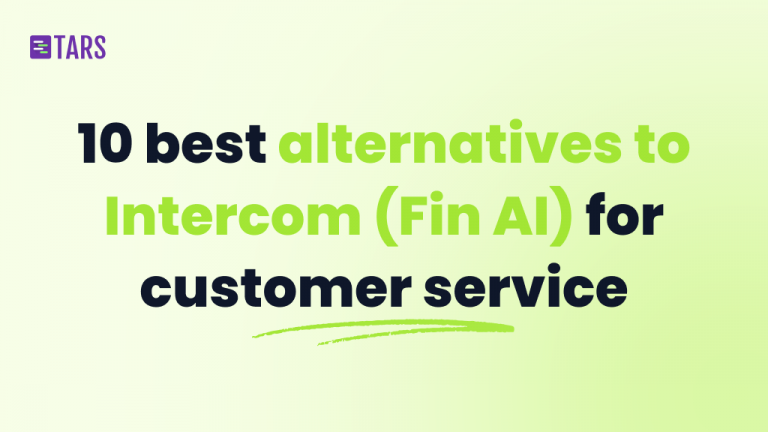
10 best alternatives to Intercom (Fin AI) for AI-powered customer service [2025]
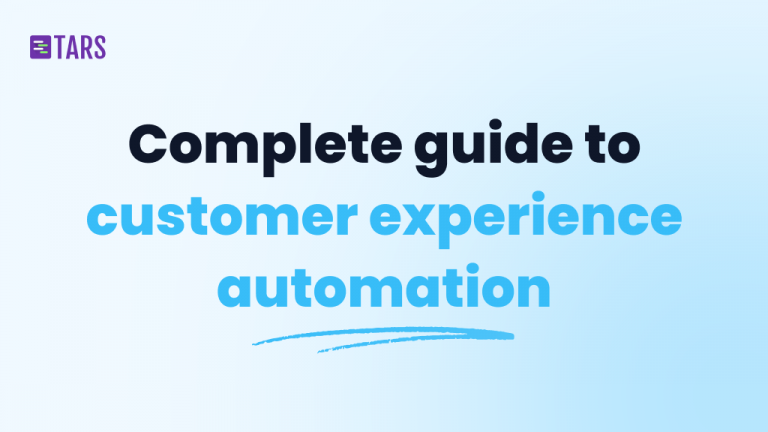
Customer experience automation: The complete guide to CXA in 2025
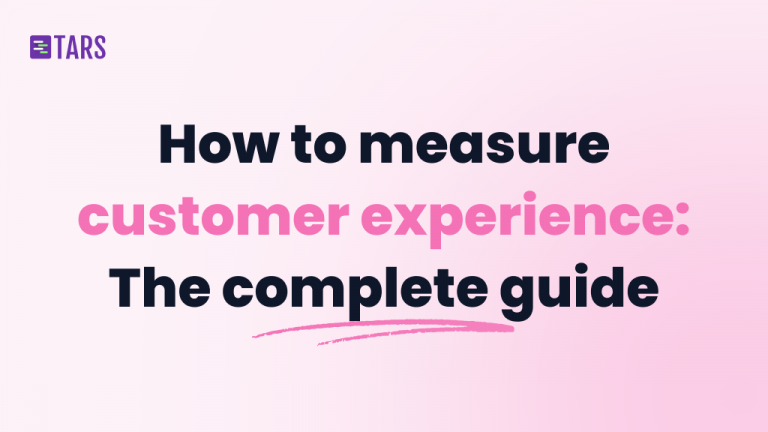
How to measure customer experience: The complete guide for AI-powered support and growth

Our journey in a few numbers
With Tars you can build Conversational AI Agents that truly understand your needs and create intelligent conversations.
years in the conversational AI space
global brands have worked with us
customer conversations automated
countries with deployed AI Agents